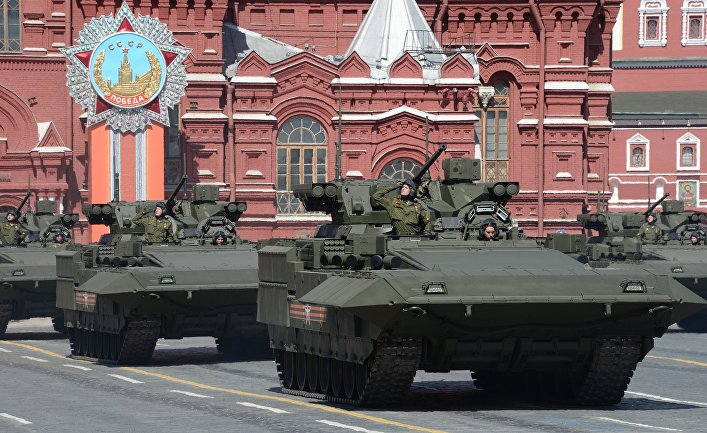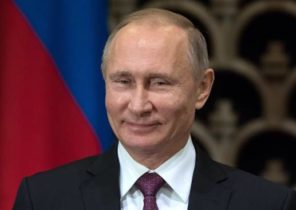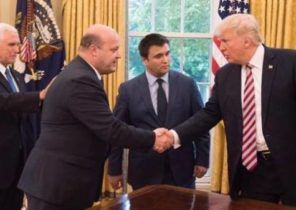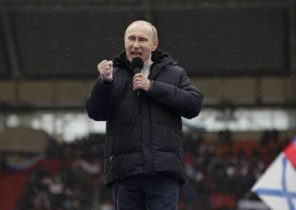
Should not seriously expect that the current budget problems will force the Kremlin to weaken the aggressive ambitions. The Russian economy ceased to fall, and the scale of the reduction of military expenditures was overstated.
Casual Russian economist Andrei Movchan phrase about reducing Moscow’s defense spending was unexpectedly read by many in Ukraine as a signal that Russia was finally “on the verge of collapse” and will inevitably follow the weakening of the aggressive ambitions of the Kremlin.
I have to disappoint proponents of this point of view neither the one nor the other is not true.
Let’s start with the economy. With the summer of 2016, the Russian economy stopped falling and went into a state of stagnation.
In the third quarter, according to the experts (Rosstat in the spring of 2016 does not publish data on GDP growth the quarter the previous quarter), the economy of Russia even showed a weak growth, which in large measure was caused by conjunctural factors: a good harvest, increased gas deliveries to Europe and the export of coal on a background of increased world prices. It is not allowing to regard this growth as sustainable.
The stagnation of the economy does not mean its a total freeze — some indicators show improvement, some continue to deteriorate. The dynamics of the same sector a couple of months to show growth, followed by may be followed by decline.
If you compare the third quarter of 2016 third quarter of 2015, a significant increase was demonstrated only agriculture and fisheries, mining and resource (gas, electricity, water) industries. All other sectors GDP falling slowly.
The gradual increase in world oil prices throughout 2016 — with $ 30 per barrel at the beginning of the year of $ 55 by the end — promoted stabilization of the financial sector. At the end of January 2016, the dollar was worth 83,6 rubles, and by the end of the year, its price fell to 60 rubles, which significantly improved the condition of the Federal budget.
Against this background the base forecast for the Russian economy for the next two years with the current oil prices ($50-55) looks quite optimistic: the growth in the range of 1%, inflation at 4-5%, decrease in budget deficit, relatively stable exchange rate.
We should expect the cessation of the decline in consumption and a gradual recovery in investment activity. In General it is not possible to talk about the recovery of the Russian economy from the crisis, but the collapse obviously can not speak.
Now on military expenditures. We must start with two caveats.
First, these costs are becoming more and more secretive, and some outsiders know of.
Secondly, the Russian Prime Minister Medvedev said “no Money!”, and the whole structure of the Russian Federal budget for the next three years is based on the freezing of total expenditures in nominal terms. Moreover, initially the Finance Ministry insisted on a small annual cost reductions, but the adoption of the budget-2017 this position he could not defend.
The result is due to the indexation of a number of articles (wages, social benefits, pensions) the rest of the budget needs to be pressed down. This “sequestration” have affected the Russian defense spending.
At the same time, the scale of the spending cuts don’t need to exaggerate. As the saying goes, there are lies, damn lies, and statistics.
Indeed, if we compare the actual defense spending 2015-2016 planned spending 2017-2019 years, one might get the impression that Russian defense spending after a sharp rise in 2016 are dramatically reduced, starting in 2017.
However, the table clearly shows that military spending in 2016 has been greatly reduced in the fall of 2015 compared to the volumes stipulated in the three-year budget for this year, the company informed.
In addition, it is striking that military spending in 2016, was sharply increased in the fall of 2016.
The fact that in 2012-2014 the Russian Ministry of Finance, wanting to give some money to the state banks used to Finance part of the defense spending of the so-called credit scheme: banks lend to defense enterprises under the guarantee of the Ministry of Finance.
The total amount of these loans amounted to about 2 trillion rubles By the end of 2016 outstanding was about 1.2 trillion rubles, of which loans to 800 billion rubles were repaid in the end of 2016.
If this amount is spread evenly over the 2017-2019 years, it becomes clear that Russia’s military spending over the next three years effectively “frozen” in nominal terms.
Experts would immediately say that adjusted for inflation we can talk about reducing defense spending in real terms. Of course, they are right: in accounting for 5.5% inflation in 2016 and decrease by 0.5 percentage points annually, spending in 2019 will be 16% below the level of 2015. However, it is not so simple.
First of all, the expenses of the Russian state armaments programme (GPV-2020) has been planned in nominal terms. Moreover, in many types of armaments within the framework of GPV-2020 was building procurement up to 2017-2018, after which funding the procurement of weapons began to decline.
This decline may have ceased after the adoption of the following programme, GPV-2025, which was supposed to begin in 2016, but its beginning was moved to 2018.
In this case between the Ministry of Finance and the Ministry of defense remain huge differences on the amount of expenses for the purchase of arms in 2018-2025. Defense Ministry demands 24 trillion rubles, the Finance Ministry is not ready to give more than 12 trillion rubles.
Finally, the original GPV-2020 was a strong bias in favor of the Navy. He got more than a quarter of the total costs, but it was never important from the point of view of the Russian military priorities.
The Russian military aggression against Ukraine exports to Russia of military products from Ukraine were banned, and then it turned out that a significant portion of marine engines for the Russian Navy was of Ukrainian origin.
In the summer of 2015 the cost of the Navy were reduced or shifted to longer terms, which could also reduce pressure defense order for the Russian budget.
And last on the line, but not in fact. In the Russian military budget in recent years, approximately two-thirds of expenditures went for the purchase of arms, and a third went for the upkeep of the army.
During fiscal consolidation the reduction subjected to the costs for the purchase of arms and financing of current expenses of the Russian army received its full share.
The Russian military action against Ukraine from the point of view of the Russian army and the Russian budget is extremely limited in scope and do not require the allocation of substantial human, material or financial resources.
In addition, part of used material resources — weapons, ammunition, fuel, food — taken from warehouses of the Russian defense Ministry and Ministry of emergency situations and is unlikely to be replenished, that is does not require funding.
Therefore, seriously to count on the fact that the current budget problems somehow affect the combat capability of the Russian army, should not be.
Moreover, if oil prices remain at current levels until the end of 2017, the Russian budget is formed additional income, and I’m willing to assume that a substantial part will go to the Russian military to compensate for the fact that they had “taken away” when planning the budget 2017.
The author is senior researcher at the Brookings institution







